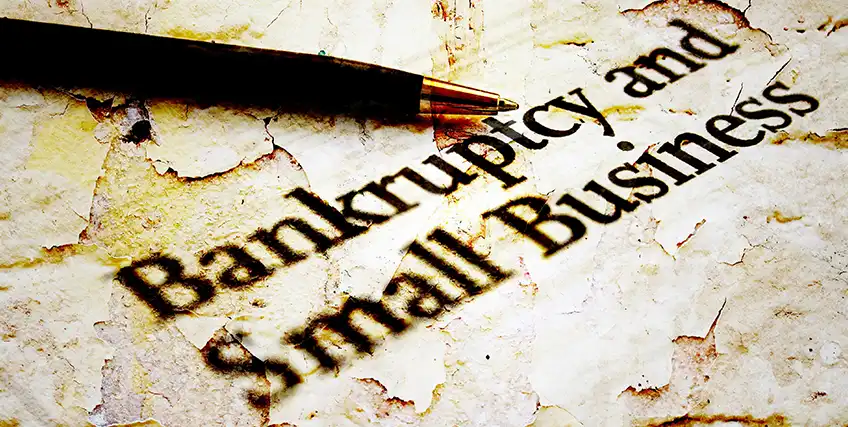
As a small business owner, the thought of bankruptcy can be a constant source of stress and anxiety. The fear of financial ruin, the loss of reputation, and the potential for legal repercussions can be overwhelming. However, it’s important to remember that bankruptcy is not inevitable, and there are steps you can take to avoid it.
Bankruptcy can be a devastating experience for small business owners, leading to financial losses, damage to credit scores, and emotional distress. However, with the right strategies, small business owners can minimize the risk of bankruptcy and protect their businesses from financial instability. In this article, we’ll provide a comprehensive guide on how to avoid bankruptcy, impact of bankruptcy on small business owners, including practical tips and strategies to help you navigate financial difficulties, minimizing risk and ensure the long-term success of your business.
Understand the Signs of Financial Trouble
The first step in avoiding bankruptcy is to recognize the signs of financial trouble. Some common indicators include:
- Difficulty paying bills on time
- Mounting debt
- Decreasing cash flow
- Increasing expenses
- Decreasing profitability
- Difficulty meeting payroll
- Increasing accounts receivable
- Decreasing inventory turnover
If your business is experiencing any of these signs, it’s important to take action immediately. Don’t wait until it’s too late, as the longer you wait, the more difficult it will be to recover.
The Impact of Bankruptcy on Small Business Owners
Bankruptcy can have severe consequences for small business owners, including:
- Financial Losses: Bankruptcy can result in significant financial losses for small business owners, including the loss of assets, inventory, and equipment.
- Damage to Credit Scores: Filing for bankruptcy can significantly damage a small business owner’s credit score, making it challenging to obtain credit in the future.
- Emotional Distress: Bankruptcy can cause emotional distress and stress for small business owners, affecting their mental and physical health.
- Loss of Business: In some cases, bankruptcy can result in the loss of the business, forcing small business owners to close their doors and lay off employees.
Strategies for Minimizing Risk
While bankruptcy can be a risky proposition for small business owners, there are strategies that can help minimize the risk. Here are some strategies that small business owners can use to protect their businesses:
- Diversify Revenue Streams: Diversifying revenue streams can help small business owners reduce their reliance on a single source of income. By expanding their product or service offerings, small business owners can attract new customers and increase revenue.
- Create a Budget: Creating a budget can help small business owners manage their finances effectively. By tracking income and expenses, small business owners can identify areas where they can cut costs and allocate resources more efficiently.
- Monitor Cash Flow: Monitoring cash flow is crucial for small business owners. By keeping track of cash inflows and outflows, small business owners can identify potential cash flow problems and take steps to address them before they become severe.
- Build an Emergency Fund: Building an emergency fund can help small business owners weather financial storms. By setting aside a portion of their revenue, small business owners can create a safety net that they can use to cover unexpected expenses or financial shortfalls.
- Seek Professional Advice: Seeking professional advice can help small business owners make informed financial decisions. By consulting with a financial advisor or accountant, small business owners can gain insights into financial management and risk reduction strategies.
- Manage Debt: Managing debt effectively is crucial for small business owners. By keeping debt levels low and negotiating favorable repayment terms, small business owners can reduce their risk of bankruptcy.
- Stay Informed: Staying informed about changes in the market, industry, and economy can help small business owners anticipate potential risks and take steps to mitigate them. By staying up-to-date with the latest news and trends, small business owners can make informed decisions that protect their businesses from financial instability.
Create a Budget and Stick to It
One of the most effective ways to avoid bankruptcy is to create a budget and stick to it. A budget will help you understand your business’s financial situation, identify areas where you can cut costs, and make informed decisions about how to allocate resources. It will also help you prioritize spending and ensure that you’re not overspending in any one area.
To create a budget, start by identifying your business’s projected income and expenses. This will help you determine how much money you have available to spend and where you need to make cuts. Be sure to include all expenses, including rent, utilities, salaries, inventory, marketing, and any other regular expenditures.
Once you have a budget in place, it’s important to stick to it. This means being disciplined about your spending and avoiding impulse purchases. It also means regularly reviewing your budget and making adjustments as needed.
Manage Your Debt
Managing your debt is another key aspect of avoiding bankruptcy. This means being mindful of your business’s debt-to-equity ratio and avoiding taking on too much debt. It also means negotiating with creditors to extend payment deadlines, consolidating debt into a single, lower-interest loan, and avoiding late fees and penalties.
To manage your debt effectively, start by identifying all of your business’s debts, including loans, credit cards, and accounts payable. Next, prioritize your debts based on the interest rate and the urgency of the payment. Focus on paying off the highest-interest debts first, and consider consolidating lower-interest debts into a single loan.
Negotiate with Creditors
Negotiating with creditors can help you avoid bankruptcy by giving you more time to pay your debts. This can be especially helpful if your business is experiencing cash flow problems. By negotiating with creditors, you may be able to extend payment deadlines, reduce the amount you owe, or even eliminate late fees and penalties.
To negotiate with creditors effectively, start by identifying all of your business’s creditors and their contact information. Next, prepare a plan for how you will pay your debts, including a timeline and a detailed breakdown of your finances. Be sure to communicate regularly with your creditors and be transparent about your financial situation.
Consider Alternative Financing Options
If your business is struggling to pay its debts, it may be time to consider alternative financing options. This could include invoice financing, factoring, or crowdfunding. These options can provide quick access to cash, without the need for traditional bank loans.
Invoice financing involves selling your outstanding invoices to a third party, who then collects payment from your customers. Factoring involves selling your accounts receivable to a third party, who then collects payment from your customers. Crowdfunding involves raising small amounts of money from a large number of people, typically through an online platform. This can be a good option for businesses that have a strong social media presence and a compelling story to tell.
To use crowdfunding effectively, it’s important to have a clear plan in place. This should include a detailed breakdown of how the funds will be used, a timeline for reaching your goals, and a strategy for promoting your campaign. It’s also important to be transparent about your business’s financial situation and to provide regular updates to your backers.
Consider a Business Line of Credit
A business line of credit can provide your business with quick access to cash, without the need for a traditional loan. With a line of credit, you can borrow up to a certain amount, and then repay the funds as needed. This can be a good option for businesses that have uneven cash flow, or that need to cover unexpected expenses.
To get a business line of credit, you’ll typically need to have a good credit score and a strong financial history. You’ll also need to provide financial statements and other documentation to demonstrate your business’s financial stability.
Use Asset-Based Lending
Asset-based lending involves using your business’s assets, such as inventory, equipment, or real estate, as collateral for a loan. This can be a good option for businesses that have valuable assets but limited cash flow.
To use asset-based lending, you’ll typically need to have assets that are worth at least as much as the loan amount. You’ll also need to have a good credit score and a strong financial history.
Consider Peer-to-Peer Lending
Peer-to-peer lending involves borrowing money from individuals, rather than traditional lenders. This can be a good option for businesses that have a strong social media presence and a compelling story to tell.
To use peer-to-peer lending, you’ll typically need to have a good credit score and a strong financial history. You’ll also need to have a clear plan in place for how you’ll use the funds and how you’ll repay the loan.
Use Government Loans
Government loans are available to businesses that meet certain criteria, such as minority-owned businesses, women-owned businesses, or businesses in certain industries. These loans typically have favorable terms, such as low interest rates and longer repayment periods.
To use government loans, you’ll typically need to meet the eligibility criteria and have a good credit score. You’ll also need to have a clear plan in place for how you’ll use the funds and how you’ll repay the loan.
Conclusion
Running a business can be challenging, especially when it comes to managing finances. Bankruptcy can have severe consequences for small business owners, but with the right strategies, they can minimize the risk of financial instability. By diversifying revenue streams, creating a budget, monitoring cash flow, building an emergency fund, considering alternative financing options, such as invoice financing, factoring, crowdfunding, and government loans seeking professional advice, managing debt, and staying informed, small business owners can protect their businesses from financial uncertainty and build a strong foundation for long-term success.


